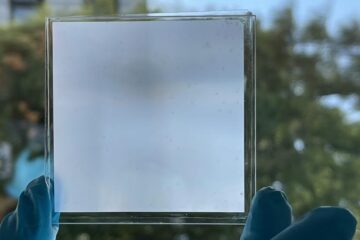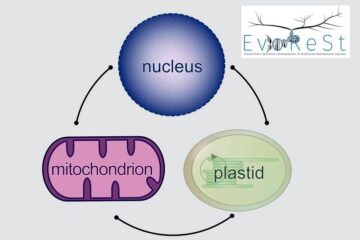Odyssey finds widespread water

Odessey reached Mars in October 2001. <br>© NASA <br>
Latest probe sends back strong evidence for lots of ice beneath Mars’ surface.
Mars is icy. Not just on its white-capped poles, according to the first images beamed back from NASA’s Mars Odyssey spacecraft.
The gamma ray spectrometer (GRS) on Odyssey detects chemicals on, or just below Mars’ surface. It has found signs of large amounts of hydrogen. „It’s most probably indicative of water ice,“ says Jeffrey Plaut, deputy project scientist for Odyssey.
The hints of hydrogen stretch to Mars’ mid-latitudes – roughly equivalent to the UK’s latitude on Earth. Many experts thought that water ice would only persist around the planet’s permanently frozen poles.
Others are unsurprised. „It doesn’t come as a great shock to me, says Colin Pillinger, of the Open University in Milton Keynes, England. „We’ve always suspected that there’s ice there,“ he says.
The hydrogen signal dies out over the poles. This is probably due to frozen carbon dioxide gas lying on top of water ice masking it from view, the researchers conclude.
Odyssey arrived at Mars in late October 2001. It has only just begun to send back data.
Global warming
Also on Odyssey is the Thermal Emission Imaging system (THEMIS). This infrared camera can infer the composition of various rocks and dust on Mars from how they lose and absorb heat between the harsh Martian nights and days.
THEMIS is revealing Martian surface details not seen before. „We’re very pleased with its performance,“ says Plaut. Scientists hope it will also show whether previously identified volcanic areas on Mars are still warm.
Such internal warmth could melt Martian permafrost, offering the best environment for life. „Warm regions provide the greatest potential for looking for life,“ says astrobiologist Richard Taylor of the Probability Research Group in England.
„Odyssey data could completely change our view of Mars,“ hopes Taylor. Existing probes like Mars Global Surveyor have made close-up measurements of the planet. But Odyssey will be the first to make global high-resolution studies.
Odyssey is not firing on all cylinders however. Its third instrument, the Mars Radiation Environment Experiment (MARIE) is broken. It worked all the way to Mars, and even sent back data on powerful radiation fields around the planet that could be lethal to manned flights. But is now failing to respond to signals from the ground.
Media Contact
Alle Nachrichten aus der Kategorie: Physik Astronomie
Von grundlegenden Gesetzen der Natur, ihre elementaren Bausteine und deren Wechselwirkungen, den Eigenschaften und dem Verhalten von Materie über Felder in Raum und Zeit bis hin zur Struktur von Raum und Zeit selbst.
Der innovations report bietet Ihnen hierzu interessante Berichte und Artikel, unter anderem zu den Teilbereichen: Astrophysik, Lasertechnologie, Kernphysik, Quantenphysik, Nanotechnologie, Teilchenphysik, Festkörperphysik, Mars, Venus, und Hubble.
Neueste Beiträge

Neuartiges Material für nachhaltiges Bauen
Innovativer Werkstoff für eine energieeffiziente Architektur: Forschende des Karlsruher Instituts für Technologie (KIT) stellen in der aktuellen Ausgabe der Fachzeitschrift Nature Communications ein polymerbasiertes Material mit besonderen Eigenschaften vor. Das…

Neues Antibiotikum gegen Erreger der Flussblindheit und Lymphatischen Filariose
Prof. Achim Hoerauf, Direktor des Instituts für Medizinische Mikrobiologie, Immunologie und Parasitologie des Universitätsklinikums Bonn (UKB), und seinem Team ist es in Kollaboration mit der Abteilung Pharmazeutische Technologie und Biopharmazie…

Evolutionäre Genomik: Folgen biodiverser Fortpflanzungssysteme
Die Deutsche Forschungsgemeinschaft (DFG) fördert die Einrichtung eines neuen Graduiertenkollegs (GRK) in der Biologie an der Universität Göttingen. Das GRK mit dem Titel „Evolutionary Genomics: Consequences of Biodiverse Reproductive Systems…





















